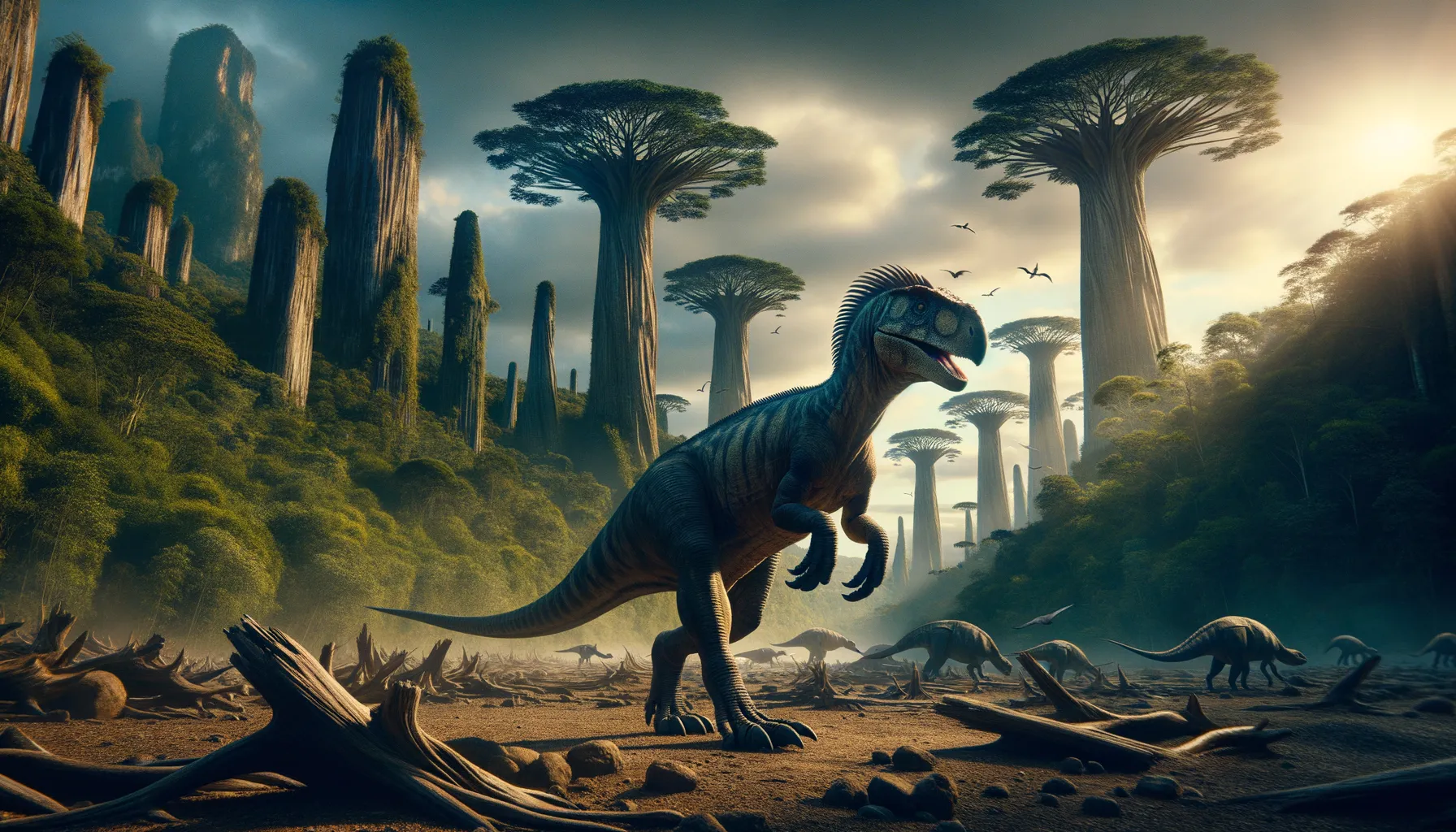
Buriolestes
A window to dinosaur evolution beginnings.
Period
Triassic
Length
About 1.5 meters long.
Height
Roughly 1 meter tall.
Weight
Approximately 7 to 10 kilograms.
Buriolestes was a small, early theropod dinosaur that roamed the Earth during the late Triassic period. Found in modern-day Brazil, this dinosaur is pivotal for understanding the early evolutionary stages of sauropodomorphs. Although it was relatively small compared to later dinosaurs, its features provide insights into the transition from small, bipedal dinosaurs to the massive sauropods. Fossils of Buriolestes have given scientists significant clues about early dinosaur diets and behaviors.
Diet
Buriolestes was likely an omnivore, feeding on both plants and small prey. Its teeth suggest it could have eaten insects and other small animals, opting for a varied diet.
Hunting
This dinosaur probably used stealth and quickness to catch its prey, relying on short bursts of speed. Being a small dinosaur, it likely preyed on insects, small vertebrates, and plants.
Environmental challenges
Living during the late Triassic, Buriolestes faced a rapidly changing environment with fluctuating climatic conditions. The competition for resources was intense due to diverse fauna. Additionally, predation from larger species would have been a constant threat, pushing Buriolestes to adapt quickly for survival.
Speed
Moderate, with agility for quick movements.
Lifespan
Estimated to be around 15 to 20 years.
First discovery
Discovered in Brazil in 2015, within the Triassic layers.
Fun Facts
- Buriolestes is one of the earliest known members of the dinosaur group that would eventually include massive sauropods.
- This dinosaur lived roughly 230 million years ago during the Late Triassic period in what is now Brazil.
- Buriolestes was relatively small for a dinosaur, measuring around 1.5 meters in length.
- Unlike its giant sauropod descendants, Buriolestes was likely bipedal, meaning it walked on two legs.
- Its teeth suggest it was an omnivore, feeding on both plants and small animals.
- The name Buriolestes means 'Buriol's robber,' named after the location where it was discovered.
- Buriolestes gives us a glimpse into the early evolutionary steps that led from small, agile dinosaurs to the gigantic forms that came later.
Growth and Development
Buriolestes, like many early dinosaurs, likely grew rapidly after hatching to evade predation. It would have gone through several growth stages, each marked by significant changes in size and capability. Their fast growth rate was crucial for reaching mature size quickly in a competitive environment.
Habitat
Its habitat was primarily arid and semi-arid with scattered vegetation, typically found near water sources such as streams or ponds. This would have provided ample food sources and space for movement. Buriolestes navigated complex landscapes rich in varied resources.
Interaction with other species
Buriolestes would have lived alongside various other early dinosaurs and reptiles, possibly competing for food with small herbivorous creatures. Its interactions were likely cautious, as it needed to be wary of larger predators. It may have scavenged as well as hunted.
Natural lifespan
It had a natural lifespan of around 15 to 20 years.
Reproduction
Buriolestes would have reproduced by laying eggs in clutches. Parental care, if present, might have involved guarding the nest area from predators. Hatchlings would have been vulnerable, necessitating rapid growth shortly after birth.
Social behaviour
There is little evidence suggesting complex social behavior, but Buriolestes might have interacted loosely in small groups. These groups could have offered protection and increased efficiency in foraging. Solitary behavior may have occurred during hunting or specific seasons.
Fossil locations
Fossils of Buriolestes have been found in the late Triassic rock formations of Rio Grande do Sul, Brazil. These discoveries have enriched our understanding of early dinosaur evolution. The fossil sites provide a coherent picture of the Triassic ecosystem in South America.
